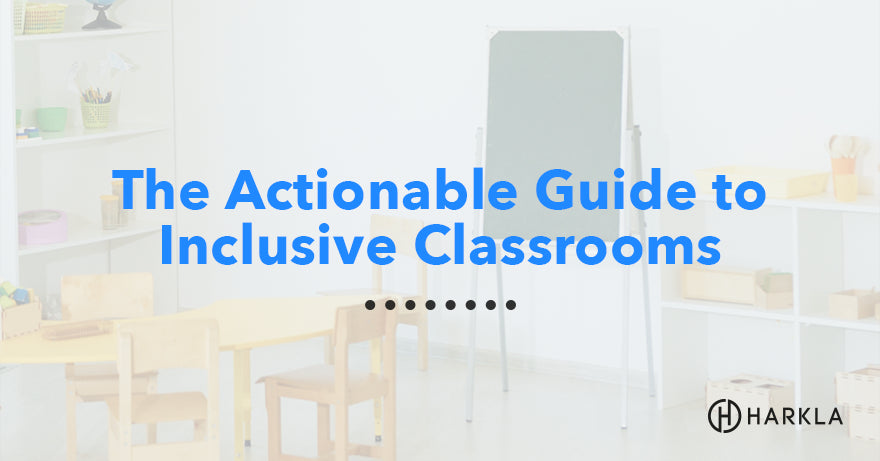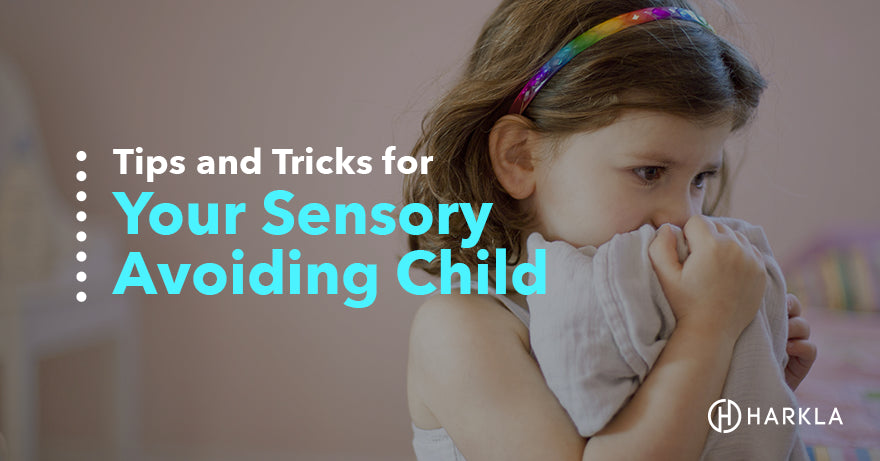Your Cart is Empty

Merriam-Webster defines inclusion as:

With that in mind, think back to your education as a child - elementary, middle/junior high, and high school. Do you recall if your school, your classroom, was considered “inclusive”? Was there a special education or resource room? If so, did the students who went to those classrooms also join you in your “regular” classrooms? Was there access to the school building for students with physical disabilities?
Now take a look at classrooms today. One study from 2018 showed that “more than 60 percent of all students with disabilities (SWDs) spend 80 percent or more of their school day in regular classrooms, alongside their non-disabled peers.”
This is a pretty significant jump over the past ten years! Why?
There are many factors for this increase, including awareness, public education on special needs and physical disabilities, and the law - specifically the Individuals with Disabilities Education Act (IDEA).
The Individuals with Disabilities Education Act (IDEA) says that children with special needs/disabilities will be provided with free, appropriate public education. It also protects the rights of these children and their families. This provides the child with rights to an Individualized Education Program (IEP) and requires the child to be educated in the least restrictive environment - meaning they will be in a classroom with their peers, children without special needs/disabilities. Of course, a child has to meet certain criteria to qualify.
So let’s break this down a bit.
Free, appropriate public education means attending a public school that does not require the family to pay tuition. It also means that the school and education provided for the child is appropriate for their age/level of understanding. The school will provide services that meet their unique needs and “prepare them for further education, employment, and independent living.” Additionally, it requires that the child is provided with a general education curriculum.
Unless there is a strong, compelling reason, children should be in a general education classroom; in the least restrictive environment. A child with an IEP, according to the law, should be with kids in general education to the “maximum extent that is appropriate." However, there may be times when the general education classroom is not appropriate for a child, in which case that child may leave to receive special education services in a different classroom to continue with their education.
Let’s also not forget about the Americans with Disabilities Act (ADA). This law “prohibits discrimination against individuals with disabilities in all areas of public life, including jobs, schools, transportation, and all public and private places that are open to the general public. The purpose of the law is to make sure that people with disabilities have the same rights and opportunities as everyone else.”
While this article focuses mostly on students with special needs and cognitive disabilities, inclusion covers EVERYONE, so we must take into account students with physical disabilities as well.
So what does it mean to have an inclusive classroom? Does it mean that all children are in the general classroom for the entire school day?
Not necessarily.
When we talk about inclusive classrooms, we are talking about a classroom that has supports for children of all abilities to be successful and where students can learn together, despite differences in sensory processing, diagnoses, or physical disabilities.
This does NOT mean having all children in the classroom and teaching according to a curriculum without considering the variety of sensory needs and learning styles.
Let’s take a look at some of the features of an inclusive classroom:
Often, an inclusive classroom may have extra supports such as:
The benefits of an inclusive classroom are many! Most research has shown that “inclusive classrooms have a positive impact on disabled students' social outcomes.” This includes academic and social benefits. Let’s take a look at both of those.
Academic benefits:
Social benefits:
There have also been benefits shown for students without disabilities.
Then, there are the benefits for the school staff.
And lastly, the benefits can even reach beyond the classroom and into the community. When a student is part of an inclusive classroom or school, they develop a better understanding of diversity, becoming more inclusive in their life outside of school.

The first step is for the educator to become aware of whether their classroom is inclusive or not. If the classroom already has inclusive components, there are likely some areas that can be improved upon - no one is perfect!
Identifying the different students within the classroom - learning styles, communication styles, and sensory needs. All of these factors play into creating an inclusive classroom.
Next, changes can be made, and new strategies and ideas can be implemented into the classroom. Here are some ideas to get started:
Change the environment:Change how information is presented. After learning style is determined, include modifications and accommodations for those on IEPs and those who may struggle but are “under the radar”:
These ideas are not the end-all. There are many ways to make a classroom more inclusive, depending on the students who are there. It will vary depending on age/grade level. It will vary depending on the different learning styles. It will also vary depending on the school district and supplies available.
For more resources and ideas, check out the book Inclusion in Action: Practical Strategies to Modify Your Curriculum, by Ms. Nicole Eredics B.Ed.
Inclusive classrooms should also incorporate sensory strategies. An article from 2020 defined sensory strategies as “any equipment or technique that increases or decreases sensory input to help a student to focus and learn.”
Sensory input is the stimuli that is perceived through our senses. We all know about 5 of the senses - touch, taste, smell, sight, and hearing. But there are 3 other senses that are not talked about enough - proprioception, vestibular, and interoception.
Proprioception is the awareness and movement of the body in space. This includes the muscles and joints in our body, which send signals to our brain to help us understand where our body is and what it is doing. This also coordinates with our sense of touch - tactile system - in regards to heavy work and deep pressure, such as a hug.
Vestibular is our sense of balance. Our vestibular system is located in our inner ear, which means that it is activated with head movement and head position changes (think of a roller coaster - moving fast and even going upside down). This sense coordinates with our sense of sight - visual system - in regards to understanding where our body is with or without the use of our vision and maintaining balance when our head (and therefore our eyes!) moves.
Interoception is our sense of understanding how we feel. This includes physical feelings such as hunger, needing to use the bathroom, and illness.
By incorporating all 8 senses into the inclusive classroom, we not only engage all students in new and different ways, but we also provide specific sensory strategies for the students who struggle with sensory processing.
Learn more about Sensory Processing Disorder here.
This one can prove to be more challenging, especially when taking into consideration different food allergies, sensitivities, and family food preferences. However, with permission from students families, you can try some of these ideas:
Similar to taste, this one can also prove more challenging due to the wide range of preferences for different smells.
Adding movement into classroom time is an effective way to improve attention and focus.
Adding proprioceptive input in the form of deep pressure and heavy work can be beneficial for students who struggle with anxiety and self-regulation. Proprioception is calming to the nervous system - learn more here.
Adding vestibular input into the day can help promote a more alert state. This is specifically for students who are showing signs of fatigue and/or distraction. However, there are some precautions when it comes to vestibular input.
Everyone processes sensory input differently, and this is especially true with vestibular input. Some crave it - meaning they seek out as much movement as possible and never seem to get dizzy or experience motion sickness. Others avoid it - they dislike movement and may become ill with even a little bit. Some process vestibular input “normally” - they enjoy movement, they can tolerate it, and they even know when “enough is enough.”
Some ways to add vestibular input into the classroom are:
For students who seek out vestibular input, you can also have them take more brain breaks that include movement and head position changes. Providing them with the input they seek can help their body feel regulated and they can then return to their seat to continue learning.
It can seem daunting to try adding in all of these new strategies in order to create an inclusive classroom. But you don’t have to do them all at once. The important thing is to identify how your students learn and communicate and tailor your teaching to them. Add modifications and accommodations when necessary to provide your students with the opportunity to grow and learn.
If you are a parent, be sure to chat with your child’s teacher or the school Occupational Therapist to discuss the strategies and accommodations that are implemented in the classroom, and how to best implement the use of weighted products. It takes a team approach to help your child learn successfully.
Additional resources
All Things Sensory by Harkla podcast
The Trend Towards Inclusive Classrooms, YouTube video
Inclusive Learning: Everyone’s In - YouTube video series
Peer Support and Social Inclusion
It is important that we also introduce at least a class of sid in full service schools since special schools are limited and which possesses a challenge challenge to the department and parents are frustrated by the waiting lists which is not assisting vulnerable children
Comments will be approved before showing up.


Joel Vinodh
September 26, 2023
Nice.